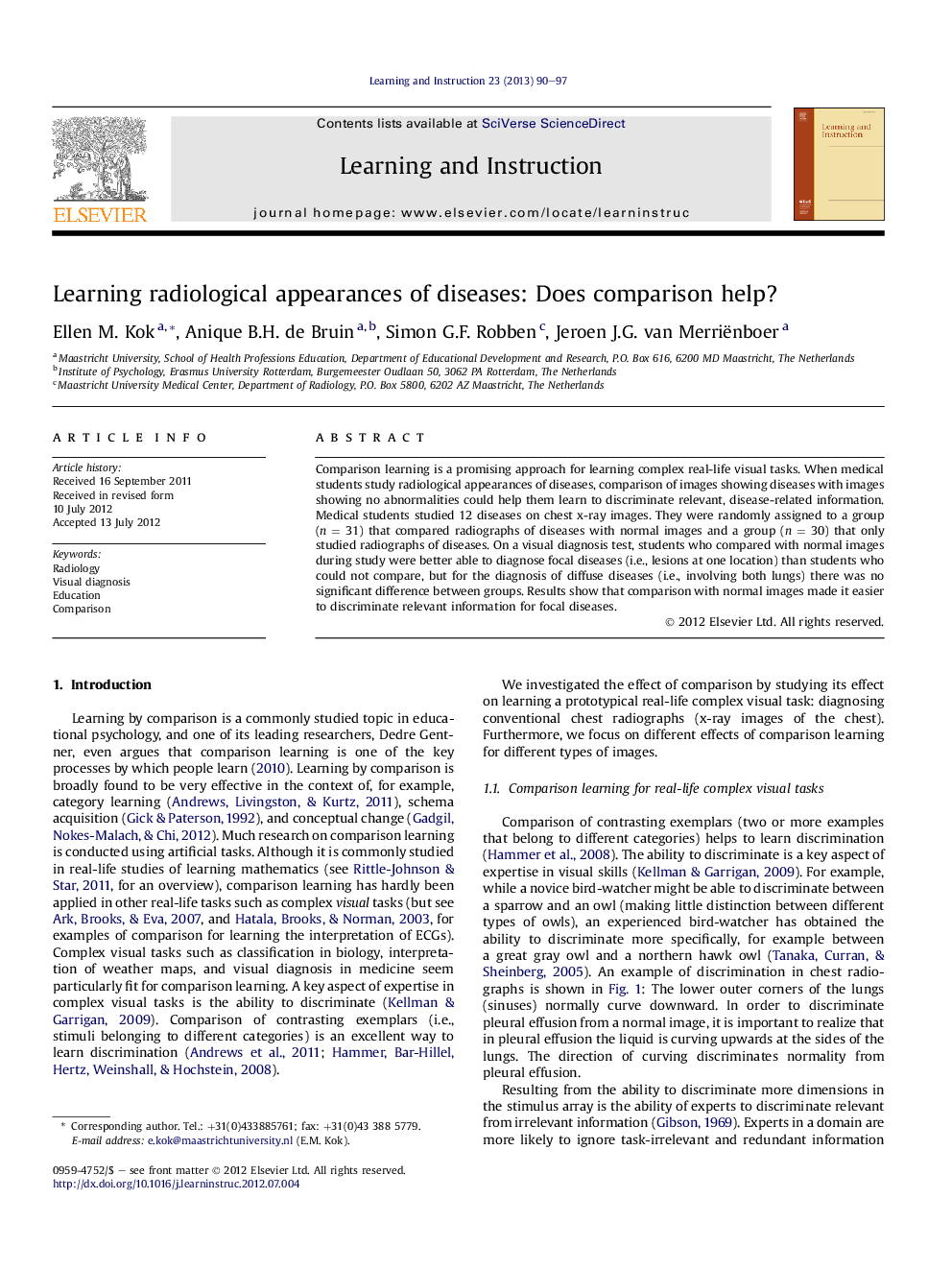| کد مقاله | کد نشریه | سال انتشار | مقاله انگلیسی | نسخه تمام متن |
|---|---|---|---|---|
| 365633 | 621211 | 2013 | 8 صفحه PDF | دانلود رایگان |

Comparison learning is a promising approach for learning complex real-life visual tasks. When medical students study radiological appearances of diseases, comparison of images showing diseases with images showing no abnormalities could help them learn to discriminate relevant, disease-related information. Medical students studied 12 diseases on chest x-ray images. They were randomly assigned to a group (n = 31) that compared radiographs of diseases with normal images and a group (n = 30) that only studied radiographs of diseases. On a visual diagnosis test, students who compared with normal images during study were better able to diagnose focal diseases (i.e., lesions at one location) than students who could not compare, but for the diagnosis of diffuse diseases (i.e., involving both lungs) there was no significant difference between groups. Results show that comparison with normal images made it easier to discriminate relevant information for focal diseases.
► During studying radiology, students compared chest radiographs with normal images.
► Comparison with normal images facilitated visual diagnosis for focal diseases.
► For diffuse diseases, diseases images only and comparison were equally effective.
► Comparison with a normal image made it easier to discriminate relevant information.
Journal: Learning and Instruction - Volume 23, February 2013, Pages 90–97